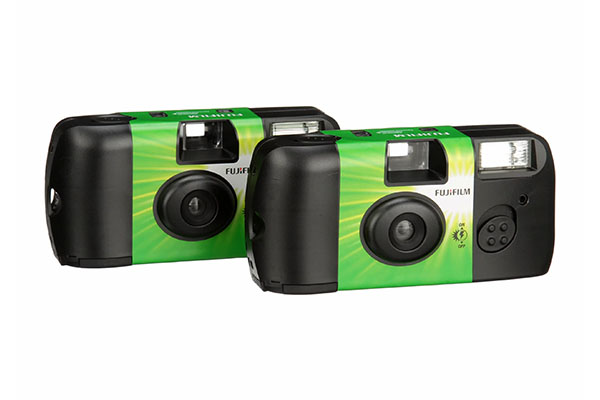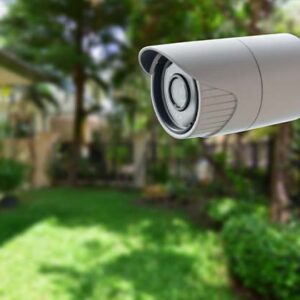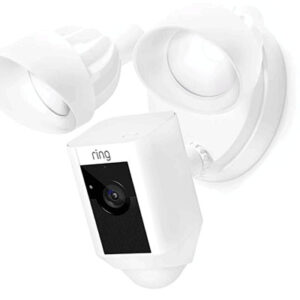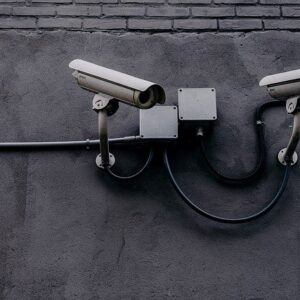Camera film shouldn’t be harmed because airport security scanners only subject it to a small amount of radiation. Although the heavier X-ray scanner used for checked baggage can damage the film, it is still necessary. Kodak advises against checking bags for your disposable camera film; instead, place it in your carry-on bag.
In order to avoid being unable to take pictures while traveling with a disposable camera and film, you should become familiar with what can damage them.
I will go into more detail about Kodak’s suggestions for flying with disposable camera films in this article.
This article will also teach you the best practices for passing through airport security scanners without risking damage to your films.
Table of Contents
Take Disposable Camera through the Security Checkpoint
To prevent any potential film damage, the TSA advises taking any cameras with undeveloped film in your carry-on luggage and asking for a hand inspection.
The movie is permitted to pass through the security checkpoint, but as the TSA has always said, the airport security officer has the final say.
Take Disposable Camera in Checked Baggage
It is not advisable to pack electronics or expensive accessories in checked baggage because most airlines do not accept responsibility for lost or damaged items.
The x-ray screening has a greater propensity to harm disposable camera film.
In addition, the TSA advises asking the security guard to physically check any film or camera that has an ISO (sensitivity of film) rating of 800 or higher before putting it in carry-on luggage.
You should pack all undeveloped film in your carry-on luggage. Instead of being subjected to X-ray screening, high speed film (800 ISO and higher) should be physically inspected.
The film needs to be physically examined in order to avoid any potential damage, even though the camera Erin is using is not a disposable one.
For instance, this Kodak FunSaver Disposable Camera, which has an 800 ISO and a 35mm sensor, could sustain damage if it weren’t manually checked before being packed in carry-on luggage.
The Chance That a Single Scan Will Ruin Your Film
It would be like flipping a coin, but nobody has studied this issue. On film, scanning has an accumulative effect. A single scan might not harm it, but two or three scans will for sure.
There are a few instances where travelers claim their disposable camera’s film was unharmed after passing through a scan or two, but these are uncommon.
You can, however, say goodbye to your disposable camera if you forgot it was in your checked luggage because you are unsure of how many times your bag was scanned.
You might believe that one airport equals one scan, but the TSA’s internal regulations call for every piece of checked baggage to be scanned twice at the very least.
If you frequently fly, I advise purchasing a lead film protective bag. You can pack the disposable cameras in your checked luggage in this way.
Be aware, though, that the x-ray scanner can’t see the inside of the bag, so if you place it inside the checked luggage, your baggage will likely be opened and manually searched.
Lead bags seem to be x-ray resistant; some people claimed they could go through ten scanners without the film being harmed.
Since purchasing a lead protection bag doesn’t cost much, why don’t we all use one?
The disadvantage is that a lead-filled film protection bag weighs a lot.
I would advise against using a lead sheet because lead is a toxic substance to shield your camera from the x-ray machine because it would be the cheapest option.
Additionally, when you take a picture, tiny particles from the disposable camera will be in your lungs.
Not to mention that a disposable camera wrapped in a lead sheet will appear to be a brick of drugs on an x-ray scanner.
Read about
How Can You Additionally Protect Your Disposable Camera Films When Passing Security?
Despite Kodak’s advice, there are some extra precautions you can take to ensure the safety of your film.
Professional photographers who have traveled extensively with their film claim that, if at all possible, you should avoid exposing your films to any X-ray radiation.
In other words, despite the fact that this radiation is supposedly less harmful, they advise against packing your films in your carry-on bags to be X-rayed.
Now, you might wonder how it would be possible to pass through airport security without putting your films in the X-ray machine. Moving forward without scanning your belongings is not allowed. However, there is a quick and easy way to ensure that you don’t expose your films to radiation, and that method is permitted by law.
- Disposable camera films can be removed from your carry-on bag and simply asked to be hand-checked.
This is actually permitted by regulations set forth by the Federal Aviation Administration (FAA) regarding photographic film and gear.
However, this regulation might not be approved by foreign airports around the world, so you will need to inform yourself additionally when it comes to going through different countries.
Therefore, before passing through security, you would just need to explain your situation to the security officers. The majority of the time, even in foreign airports, you shouldn’t encounter any problems.
They have special techniques for checking films, such as taking swab tests on them. You’ll be good to go and your films will pass unharmed if they pass the swab test.
If you plan on traveling through several security checkpoints, this is a particularly useful method for carrying your disposable camera film.
As Kodak recommends, one passing through X-ray radiation might not be harmful to your films, but if your trip involves switching flights and passing a lot of security scanners, then there is no guarantee that your films will go without damage.

Tips for Using a Disposable Camera as a First-time User
- Don’t touch the camera with your fingers.
Given that disposable cameras are much smaller than conventional ones, this is easier said than done.
If you have large hands, you will need to be careful where you place your fingers if you don’t want to have a finger shadow in every picture.
Given that you view a viewfinder instead of the actual lens when taking a picture, you might not be aware that your finger is on the front of the lens.
Even more annoying is the fact that you won’t discover how badly you handled your photos until you get them back from the photo lab.
- To use the flash, read the camera’s instructions.
All disposable cameras require the flash to charge for a brief period of time before use.
The flash-ready LED must be at its brightest before you can use the camera to take pictures in low light or the dark. This is done by pressing the flash charge button for a short period of time.
If your disposable camera lacks a press and release button, always remember to turn the flash off after using it.
If possible, use the flash whenever you are indoors unless there is a lot of natural light present.
I suggest using the flash if the room is lit artificially because it will make your pictures look better. The flash should also be used when taking pictures inside an airplane.
Don’t hesitate to use the flash whenever you have any doubts. Uneven exposure is a common problem with disposable cameras.
- Keep your distance.
Selfies and close-up pictures are not intended to be taken with disposable cameras. Typically, the sweet spot is located about 15 feet from the camera.
You will get the best shots at this distance. The photos will, however, become blurry if you are too close to your subject.
- Pay attention to the light.
Always position yourself so the sun is behind you rather than in front of you for the best photos. By doing this, your subject won’t be silhouetted in the dark when you take detailed pictures.
Can a Disposable Camera Be Reused?
Reusing a disposable camera is possible, but there are a few things to keep in mind.
First off, not all disposable cameras are created equal; some can be opened more quickly than others.
For example, if you have a Kodak FunSaver, it’s effortless to reload new film compared to a disposable camera from Fujifilm.
However, keep in mind that you must reload film in a completely dark environment.
That means there isn’t even a single light source. It won’t be enough to cover up the window light with a blanket.
If the film is exposed to even a very small amount of light during this process, it will become damaged.
I suggest practicing this technique on some old film a few times until you get the hang of it.
Because you won’t be able to see anything when you change the film, that is the reason.
You can ask the staff at a photo lab to reload the film in the dark room for you if you’re having trouble doing it yourself.
You’ll require black tape to seal the camera once the new film has been put in. The battery might also need to be changed.
I suggest purchasing a cheap reusable camera if you plan to refill your disposable camera. It will only cost a few dollars more and make your life so much simpler.
Should You Reuse Your Disposable Camera?
You may choose to do that, but I will explain why I don’t believe it is worthwhile.
First off, it is not intended for these products to be reused. There is a reason that they are called “disposable.” They may crack at any time if they are reused.
Second, a Fujifilm QuickSnap Flash 400 Disposable 35mm Camera costs about $20. A Fujicolor Superia 400 Color Negative Film, which costs about $17, is already installed in this camera.
You might believe that the camera alone costs $3, but that is incorrect because Fujifilm needs to make a profit.
In reality, they reduced the film’s length from 36 exposures to just 27 for the disposable camera.
Even so, I continue to think that it is not worthwhile to reuse a disposable camera in order to save a few dollars.
The likelihood of causing the film to be damaged is too great if you don’t know what you’re doing.
Instead of attempting to change the film yourself, I would suggest waiting until Black Friday in order to purchase a pack of four cameras at a significant discount.
Four disposable cameras should last you the entire year, barring any serious photography needs.
Walmart offers inexpensive disposable cameras, so you might want to check there if you want to find better prices all year long.
The only drawback is that you can’t check for these discounts online; you have to go in person instead.
Can the Security Scanner Damage SD Card Memory?
You might be wondering whether the scanner can harm your SD card and its memory now that we’ve established safe ways to pass through security with your film.
In the past, the scanners have imposed a real problem for photographers since the SD cards were damaged by X-ray machines. But that issue appears to be resolved in modern times.
Today, flashcards are remarkably resilient, meaning that they could safely pass through scanners. To be safe, some photographers like to keep their SD cards in their pockets, but that is unnecessary.
You can put your SD card in either in your carry-on bag or in your checked luggage, and you can rest assured that no harm will come to it.
Disposable camera films are sensitive, so you should be extremely careful when you are passing through airport security scanners.
It is advised that you bring them in your hand luggage, but it is even safer to request a hand check of your films. Regarding security scanners and disposable camera films, this is your safest option.
Can You Buy a Disposable Camera at the Airport?
You couldn’t find a store selling disposable cameras at the time this article was written in almost every airport in the United States.
Things are much better overseas now that they are available in every major airport.
I believe the cause of their absence from the United States airports is the small profit margins the shops make from them.
Another factor is the availability of digital cameras like GoPro for purchase at airports. Even vending machines, like Best Buy’s Kiosks, sell electronics like digital cameras.
It wouldn’t make sense for Best Buy to place a $20 disposable camera next to a $600 GoPro because most travelers at airports will pick the cheaper option and forego purchasing the more expensive GoPro.
You can purchase disposable cameras in other countries at specialty stores like Kodak Express.
But if you travel internationally, I suggest avoiding purchasing a disposable camera at the airport because they frequently cost more.
The Bottom Line
Disposable cameras are allowed in carry-on or checked bags.
The stronger x-ray scanner used to scan checked baggage, however, has led to a rise in x-ray fog. Disposable cameras shouldn’t be brought in checked luggage.
Disposable cameras should always be brought in carry-on luggage. The x-ray machine at the carry-on security checkpoint shouldn’t harm disposable cameras that have unprocessed film under 800 ISO.
However, if your disposable camera contains priceless images and you don’t want to take any chances, you can request that the TSA officers manning the security checkpoints manually inspect your disposable camera.
It is best to take pictures with your cellphone or bring a digital camera if you don’t want to risk delays at airport security!





